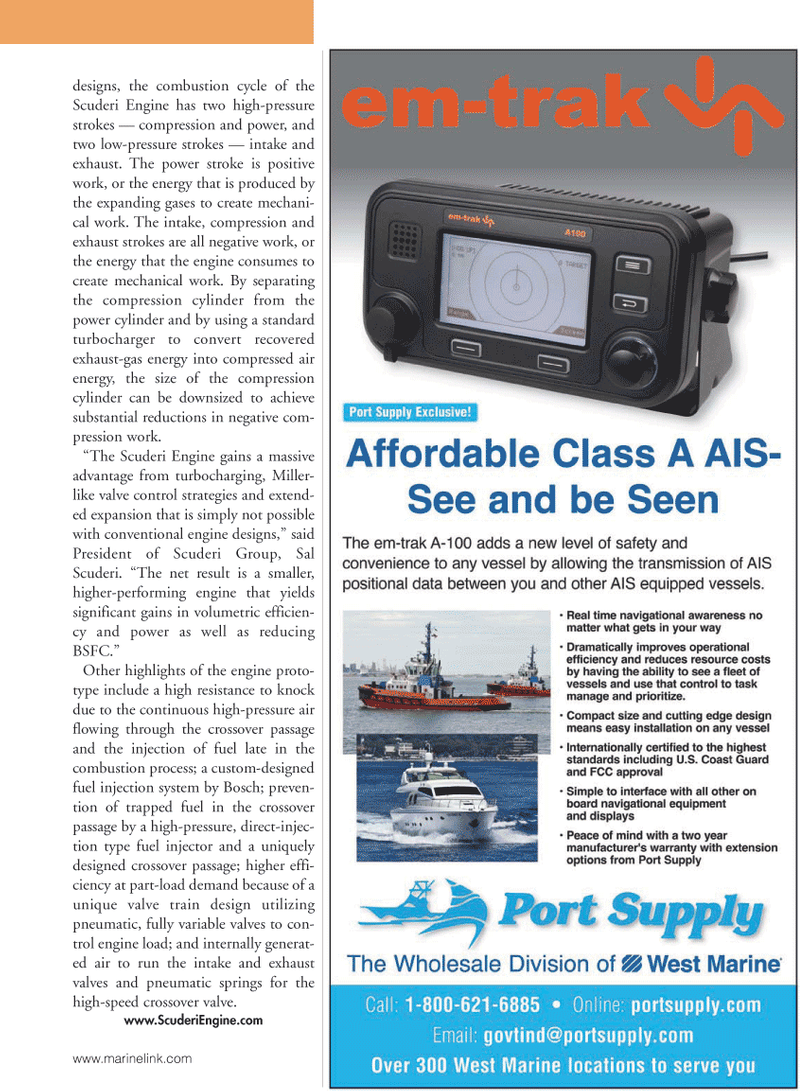
Page 13: of Marine News Magazine (June 2011)
CEO Six-Pack: The Leadership Edition
Read this page in Pdf, Flash or Html5 edition of June 2011 Marine News Magazine
designs, the combustion cycle of the
Scuderi Engine has two high-pressure strokes — compression and power, and two low-pressure strokes — intake and exhaust. The power stroke is positive work, or the energy that is produced by the expanding gases to create mechani- cal work. The intake, compression and exhaust strokes are all negative work, or the energy that the engine consumes to create mechanical work. By separating the compression cylinder from the power cylinder and by using a standard turbocharger to convert recovered exhaust-gas energy into compressed air energy, the size of the compression cylinder can be downsized to achieve substantial reductions in negative com- pression work. “The Scuderi Engine gains a massive advantage from turbocharging, Miller- like valve control strategies and extend- ed expansion that is simply not possible with conventional engine designs,” said
President of Scuderi Group, Sal
Scuderi. “The net result is a smaller, higher-performing engine that yields significant gains in volumetric efficien- cy and power as well as reducing
BSFC.”
Other highlights of the engine proto- type include a high resistance to knock due to the continuous high-pressure air flowing through the crossover passage and the injection of fuel late in the combustion process; a custom-designed fuel injection system by Bosch; preven- tion of trapped fuel in the crossover passage by a high-pressure, direct-injec- tion type fuel injector and a uniquely designed crossover passage; higher effi- ciency at part-load demand because of a unique valve train design utilizing pneumatic, fully variable valves to con- trol engine load; and internally generat- ed air to run the intake and exhaust valves and pneumatic springs for the high-speed crossover valve. www.ScuderiEngine.com www.marinelink.com

 12
12

 14
14
